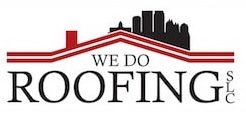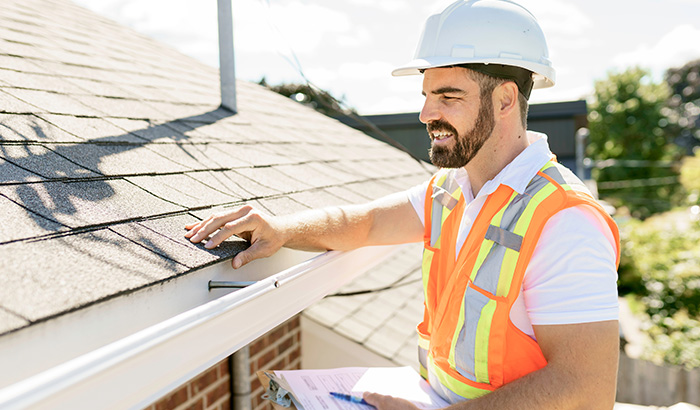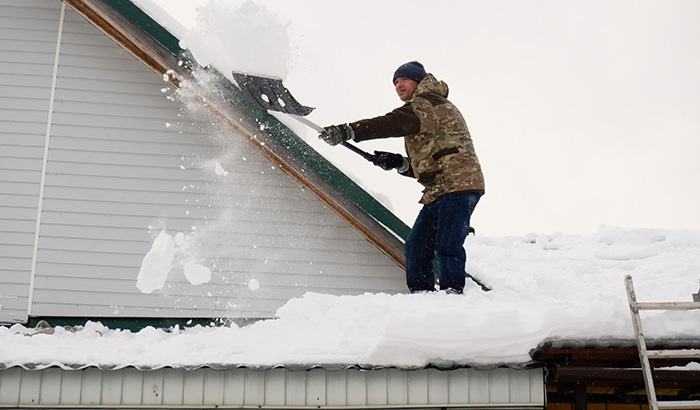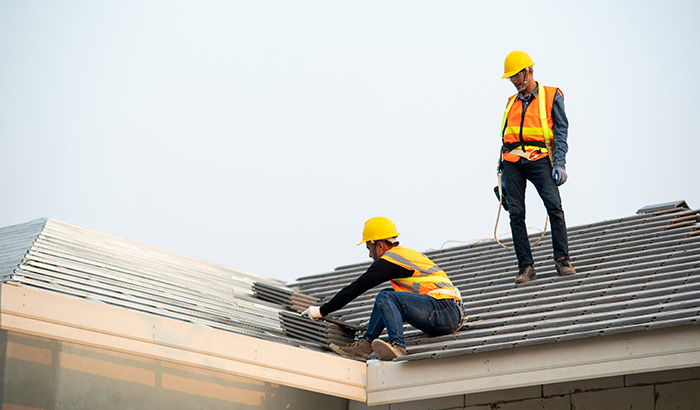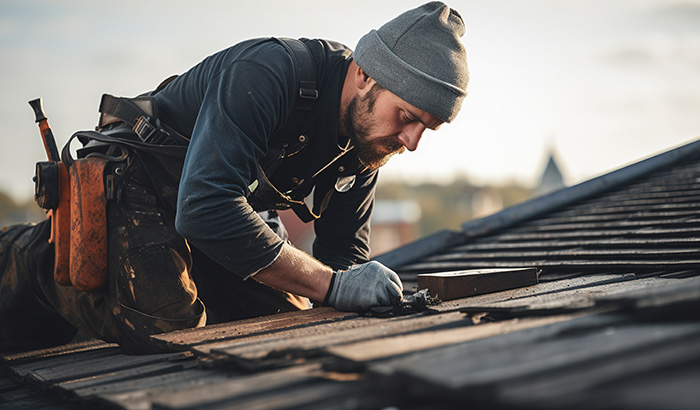A roof inspection done by a professional is vital to the health and functionality of your roof and is a necessary step in caring for your home.
The roof is one of your property’s most, if not the most, essential components. It is your first defense against harsh weather and protects you and your loved ones living in your home. Without a functioning roof, you can expect many home-related issues, such as water damage, electrical faults, mold, mildew growth, and so much more.
Staying on top of damage and minor repairs is essential, and the best way to catch any problems is by hiring a roof inspection company to conduct a roof inspection before these issues have time to turn into even bigger, costlier, and more time-consuming headaches.
So, what can a property owner do to prepare for these inspections? What are the benefits of proper preparation? What should homeowners expect? How often should roof inspections be done? Today, we’re answering all of these questions and more.
Continue scrolling to find out.
8 Ways You Can Prepare for a Roof Inspection
Taking time to prepare for a roof inspection might be the difference between a successful and unsuccessful task. Here are eight tips you can follow to help ensure your roof inspection goes as smoothly as possible:
- Always Check the Weather Report — Before scheduling your roof inspection, make sure to check out the local weather conditions. Because roofs are constantly exposed to the elements, ensuring the forecast is favorable for your inspection is crucial.
If you live in a climate that experiences intense winters, try scheduling your roof inspection before the temperature begins to drop. This ensures that your roofing professional can access every part of your roof that each of your roof’s components is inspected properly, and that damage can be identified quickly. Scheduling your inspection during dry weather allows moisture problems to be identified with ease. - Remove Debris From the Roof — Before your inspection, make sure your roof is clear of any debris and dirt that has gathered on your roof since your last inspection. A clear workspace ensures your inspector can properly access and assess your entire roof without obstruction.
If any tree limbs or branches are overhanging, consider trimming them back to avoid future potential issues. Your roof inspector will need easy access to skylights, vents, and all other roof features. - Identify Any Problem Areas — If you have noticed any problems with your roof, like missing shingles, broken flashing, or water damage, it is critical to point out the areas to your roof inspector. This will help the process along, and identifying and addressing issues will be faster so that all necessary repairs can be made in a timely manner.
Moreover, if you notice any signs of wear and tear, the damage is likely worse than you might think. A lot of roof damage goes unseen for a long time, and once it’s noticeable to a layman, the issue is generally far along. Always mention these areas to your inspector so they can thoroughly check out the area. - Keep an Eye Out for Safety Hazards — It is essential to ensure no safety hazards could endanger you, your roof inspector, or anyone involved. Make sure to scan the area for sharp objects, loose debris, and any other potential dangers. This includes keeping children or pets away from the area while the roof is inspected.
- Gather Necessary Information and Documents — To best assess your roof, your inspector will need to look at all relevant information, like building plans, past inspection reports, warranty documents, and more. Having this information on hand before your inspection can save time, help answer questions, and ensure that all issues are quickly identified.
While it’s not required, providing your roof inspector with past and present pictures of your roof can help them identify any issues, damage, and wear and tear. Your inspector will use the photographs as a reference point to compare and contrast them to the current state of your roof. - Review Reports and Documentation from Previous Inspections — Since you already have gathered previous inspection reports and documents, it’s a good idea to refresh your brain on the matter. This will give you a better understanding of the condition of your roof at your last inspection, what was teetering on the edge of needing repair or attention, and what areas the inspector should pay special attention to.
- Prepare a Checklist — To ensure all areas of your roof inspection are covered, you may want to consider creating a checklist before your scheduled appointment. Doing so ensures all roof aspects are checked, and nothing is overlooked. Include any specifics you want your inspector to touch on, such as your gutter system, shingles, flashing, etc.
- Communicate Your End Goal — Alongside your checklist, it’s essential to communicate with your inspector your goal and any concerns you have beforehand. This ensures that you and the inspector are on the same page and that they understand what you want them to look for so they can adequately address the issues they find.
On a similar topic, remember that they are the professionals and they have a trained eye. Because you’ve hired a trusted professional, allow them to do their thing and trust them that they know what they’re doing.
The Benefits of Taking Time to Prepare for a Roof Inspection
Regarding roof care and maintenance, properly preparing the area is essential. Not only does it ensure that your roof is safe and in good condition, but it also helps prevent expensive issues down the road.
Here are some of the perks that come with implementing the above preparation tips:
- Increased Roof Safety — The most important reason to take time to prepare for your roof inspection is that doing so ensures the safety of everyone using or accessing your roof. By taking the necessary steps and dedicating the time to identify potential safety hazards and make amendments, you can minimize risk and reduce the possibility of accidents and injuries.
- Improved Roof and Home Efficiency — Prioritizing the time to prepare for your roof inspection properly is also beneficial because it means improving your roof’s overall efficiency and effectiveness. Property owners will enjoy time and money savings on energy costs because your roof and home will be functioning at its best.
- Save Money — Preparing your roof for an inspection can save you money in the long run. Sure, there is an initial time investment, but by addressing any existing issues before your roof inspection, you can avoid expensive repairs and replacements that could have been avoided in the first place.
Why Are Roof Inspections Necessary?
Roof inspections help determine your roof’s integrity, longevity, and functionality. They help property owners know when repairs and a total replacement are necessary. Roof inspection professionals have special procedures and practices wherein they can decide any roof’s lifespan without taking it apart.
Roof inspections are a necessary part of homeownership because they help prevent significant issues from happening. When roof inspections are not regularly conducted, major issues can develop and damage your property.
When Should a Roof Inspection Take Place?
It is recommended by professionals all across the United States that roof inspections should occur at least twice each year. Once in the fall to gear up for the winter and again in the spring to catch any issues that may have occurred during the intense winter season. A roof inspection should also take place after any major weather events, such as strong wind, heavy rain or snowfall, hurricanes, tornados, and other types of storms.
Moreover, if you notice any changes in your roof’s appearance, like sagging or other signs of damage, a professional should come to inspect your roof. By properly taking care of the roof, property owners can prevent larger issues from developing and increase or reach the full potential of their roof’s lifespan.
What to Expect During a Roof Inspection
While routines will vary from one inspector to the next, generally speaking, you can expect the same thing. Your roof inspector will look at every component of your roof, including the structural support system the stability of the roofing materials, and look for any signs of damage or wear and tear throughout the roof area.
Here’s what you can expect:
- The Structural Inspection — The structural roof inspection will check how well the overall structural system is holding up. This part of the inspection involves looking for signs that could lead to a sagging roof based on how your roof is laid out.
This part of your inspection does not focus on looking for missing or damaged components of your roof. Instead, it examines the well-being and integrity of the main elements of your roofing system.
Signs that your roof could be sagging include:
- Rotting, splintered, or cracked rafters and trusses
- Sagging ceilings inside the house
- Damaged or Missing rafter and collar ties
- Tilting or leaning exterior walls
Inspectors will also look at the condition of your gutters, soffit, and fascia while they’re on your roof. If your roof has vents, chimneys, or skylights, they’ll also include these in their inspection and look at the condition of the grout, seals, and other exterior components.
- The Material Inspection — The material inspection focuses on looking at the condition and presence of the roofing materials, like your shingles. Your inspector will look at them for any signs of damage, any missing components, and more. This portion of the inspection also includes looking at the flashing under the roofing material for signs of pests, cracks, or leaks.
- The Interior Inspection — This part of the inspection tackles any signs of damage that are not visible from the outside. During this portion, inspectors will examine the house’s interior ceilings, attics, and walls.
Signs of issues include:
- Wood rot
- Water stains
- Mold
- Bubbling paint
- Pests in your attic
- Holes in walls or ceilings
Roof Inspections: DIY vs. Professional
Property owners should conduct regular roof inspections for the safety of the ground. Sure, a ground-level inspection won’t tell you 100% of what is going on with your roof, but it will give you enough information to know the necessary next steps.
If a ladder and rooftop inspection is necessary, property owners should always contact a professional roof inspection company to tackle the job. They have the tools and equipment required, a keen eye to accomplish the inspection, and the experience and skill set needed to safely and efficiently maneuver the task.
Call a professional roof inspection company to get the job done when in doubt.
Need a Roof Inspection Professional? We Do Roofing Salt Lake City is Here to Help!
Whether you need a roof inspection, repairs, replacement, or something else, the expert team at We Do Roofing Salt Lake City is here for you!
The licensed roofing team at We Do Roofing SLC is Wasatch Front’s most reputable and reliable roofing team. With more than 20 years of experience, We Do Roofing provides expert roof inspections, repairs, new construction roofs, re-roofing, and more for all residential and commercial clients in Salt Lake County.
Our team of professionals is here to answer any of your questions about your roof inspection, repair, and replacement options, and we want you to feel comfortable every step along the way.
Our trusted team serves those in Salt Lake City, West Valley City, Murray, West Jordan, and many other neighboring cities in Northern Utah.
Contact We Do Roofing SLC for a quick quote, ask questions, and schedule your roof inspection today!
